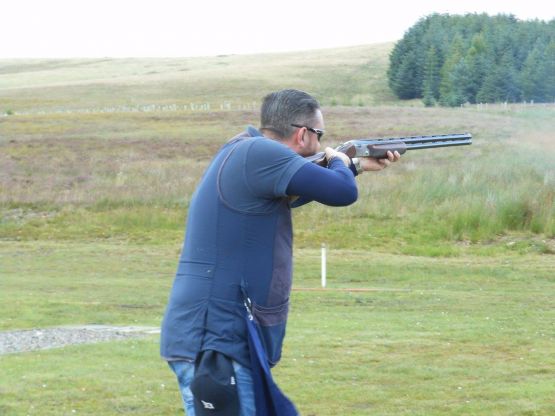
But in the long run it’s the best method for improving your shooting skills.The starting point to shooting consistently well is making sure that all the fundamentals are in place. It completely changes the way you shoot, and you will likely struggle with it. Starting at shorter ranges is a good way to begin if you don’t already shoot this way, because it takes some getting used to and close-range shots are easier.

I practiced this mount on skeet first with Bourjaily before moving on to longer targets. If you want more information on this shooting method, check out Gil and Vicki Ash’s OSP School and teachings.
CLAY SHOOTING BLOCKS FULL
Match the speed of the bird (your brain will take this over with practice) with your barrel, then bring the gun to your cheek for a full mount, see the clay target, and fire. Your barrel must be even farther in front of where you are looking so you can see the bird and start moving the gun. Don’t look directly at the house or trap that will put you behind the bird when it’s thrown. You need to look in front of the the shooting house or clay bird trap so you can see the bird when you call for it. When you shoot low gun-mount, start your swing, then shoot-you’re going to have a difficult time connecting at long range. Once you reconcile yourself to that, this process becomes far less frustrating.Įvery little thing matters when you start shooting targets over 40 yards, starting with your mount. Your approach to hunting isn’t the same as it is shooting clays. Neither of these two techniques works well when shooting over 40 yards, which I’ll get into later. In the grouse woods or in quail hunting, many hunters will snap shoot these small birds, covering them with the barrel and pulling the trigger. Most hunters who can shoot birds well will look at the front of a duck or rooster, pull the trigger, and kill it. Understanding that the approach is much different between shooting wild birds at 25 yards and shooting clays at over 40 yards can be tough for many hunters to comprehend (it certainly was, and remains, a challenge for me).

Unless you shoot woodcock or mourning doves, clay birds are also a smaller target to hit and they move faster than most wild birds. This may only be a second or two, but it’s plenty of time to make a mistake. Some hunters have trouble making the transition from shooting accurately at wild birds to shooting clay birds, because the latter often requires you to get your barrel farther in front of the target and keep it there for a longer amount of time. I love both these hunting pursuits, but you don’t have to take much lead into account when a rooster flushes or a pintail is backpedaling over the spread. But it doesn’t prove you’re a good shot, even if you rarely miss. Killing pheasants over a good bird dog or shooting ducks in the decoys is fun.

That’s what I am after, only with a shotgun.ġ. It’s a similar concept rifle shooters use when they shoot out to 1,000 yards: It turns a 200-yard shot into a no-brainer. But understanding where to shoot and what technique to use in order to break clay targets at longer yardages can make you better at skeet, trap, sporting clays, and hunting birds. I don’t advocate longer shots on wild birds because it increases the chance of cripples. I’m not doing it so I can kill game birds at 40-plus yards.

CLAY SHOOTING BLOCKS HOW TO
With the help of Field & Stream Shotguns Editor Phil Bourjaily, I’m trying to learn how to become a better shooter beyond 40. Also, shot patterns-no matter what choke or shot size you’re using-are going to be worse at 40 yards and beyond than they are at 21 yards, which is the distance to the center crossing point in American skeet. You also need to use different shotgun swing techniques to connect with clay birds. The first is simple: The farther a target is from your shooting position, the harder it is to hit. There are a few reasons why this happens. The 40-yard mark is where most shotgun enthusiasts see their shooting take a nosedive.


 0 kommentar(er)
0 kommentar(er)
